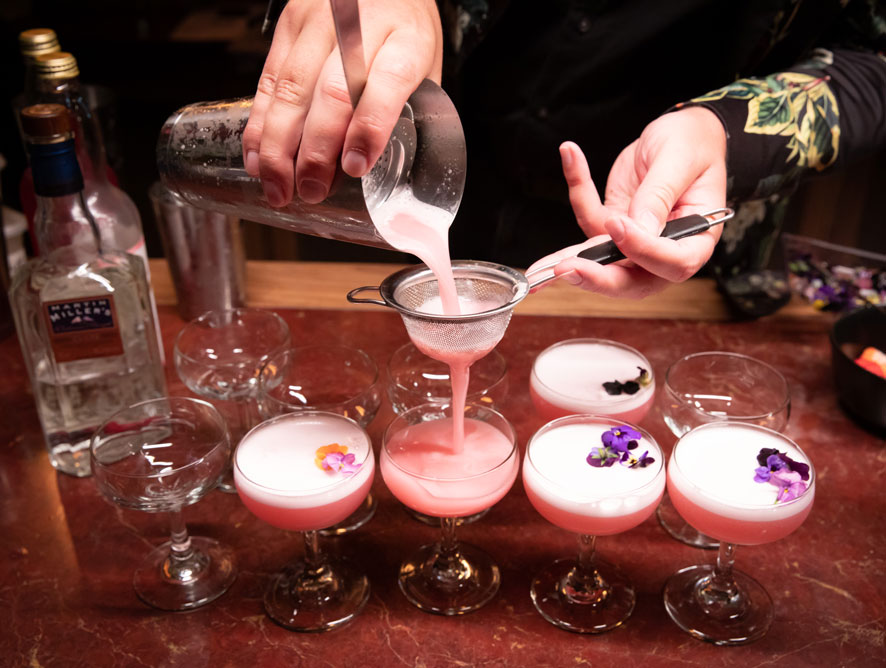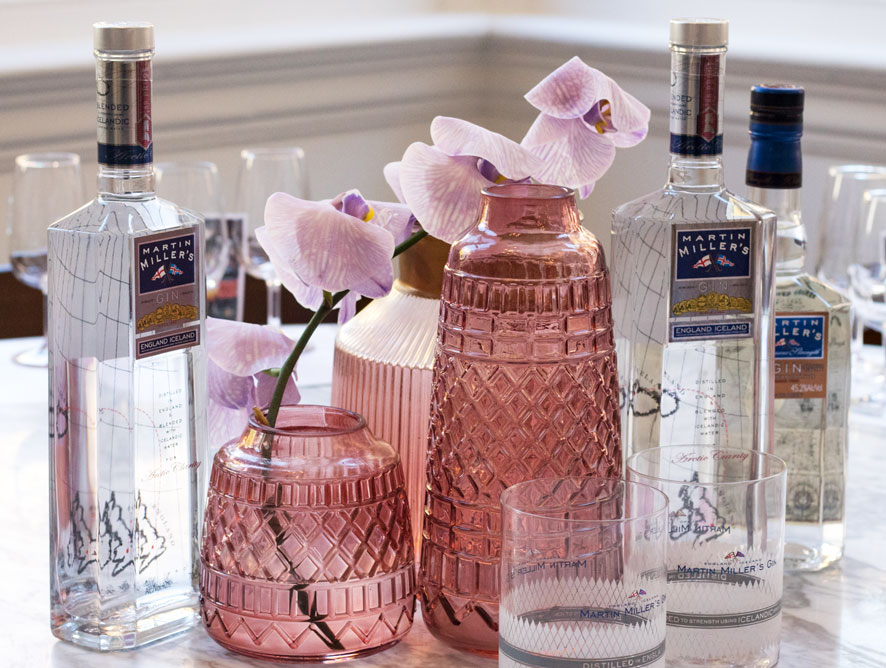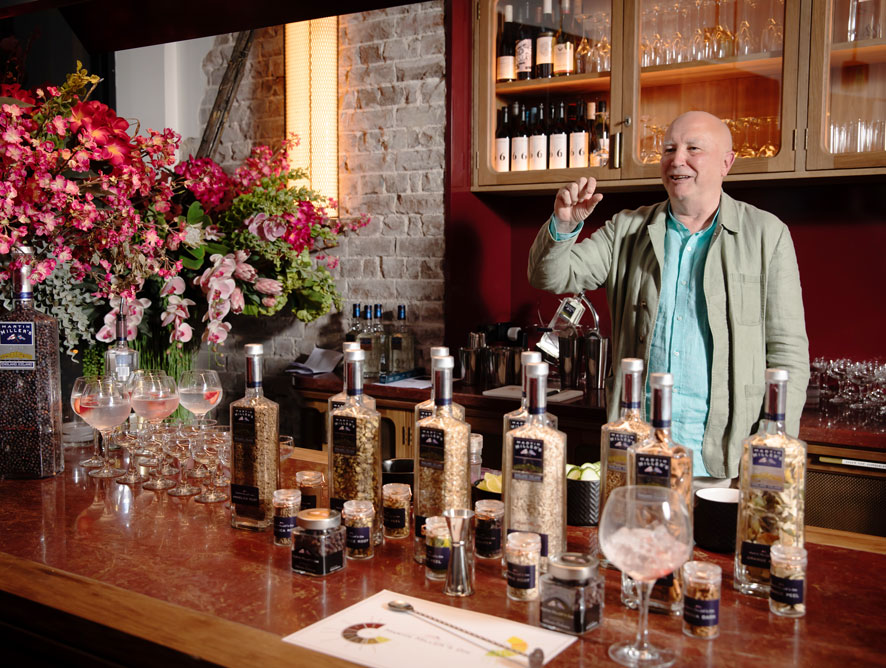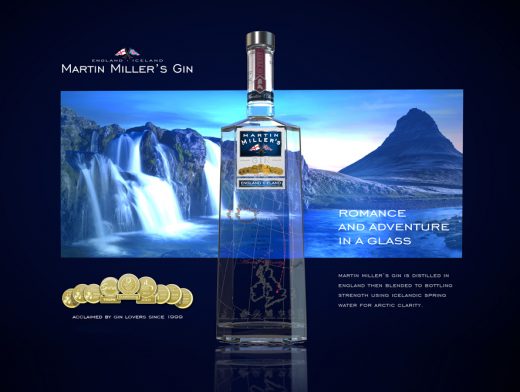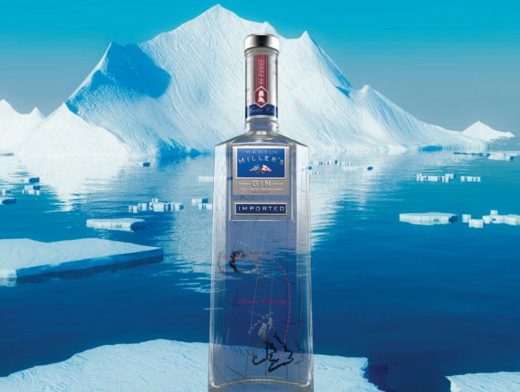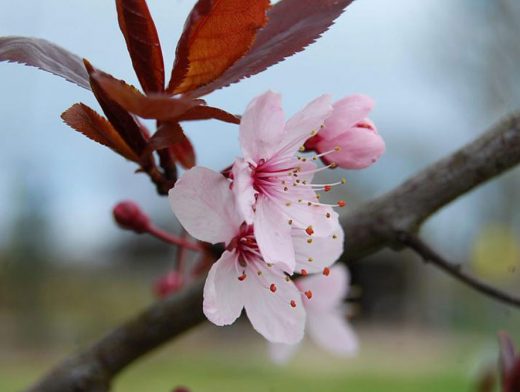Recently, we had to honour of hosting David Bromige, co-founder and co-owner of Martin Miller’s Gin, in our Australian market. A long-standing friend of Martin Miller himself, David shared with us the unique elements of Martin Miller’s gin through select masterclasses, consumer and PR events as well as trade interviews.
David’s early career involved owning his own design agency with a client base of super premium brands. It was his wealth of experience and extensive knowledge of the drink’s category, that led him to develop new products for top drinks companies such as Diageo, Pernod Ricard and William Grant & Sons.
Alongside Martin Miller’s Gin, its original parent company, The Reformed Spirits Company was behind the development of such brands as Fever-Tree Tonic Water which launched in 2004. The year 2000 saw the launch of an Icelandic vodka, Polstar, which rapidly became the fastest growing vodka in the UK. Polstar was sold to William Grants in 2002, which later became Reyka Vodka; and in 2009, they created the world’s first clear cream liqueur, Triibe.
Together with his co-founders, David was instrumental in propelling Martin Miller’s Gin to the forefront of the gin category as one of the leading super-premium gins in the world.
David Bromige told us about the decisive moment he, Martin and a mutual friend, Andreas Versteegh, decided to start their own gin brand.
Martin, Andreas and David were friends socially. David and Andreas had been involved in developing a vodka from Iceland. One day the three of them were sitting in a bar in Notting Hill, near to where Martin lived. Martin ordered 3 gin and tonics on a warm spring day in 1998. David explained “Back then, what arrived is what you got, a half pint beer glass with a smear of Gordon’s gin, and topped up with tonic from a gun. We asked for ice, and it was like, “oh ice? okay!” and they dropped a few in the glass. We sat there looking at these gin & tonics and Martin said – “Look at this drink, this is supposed to be the great British drink, and this is what it looks like! After all, gin isn’t some boring neutral spirit, gin is the most seductive of drinks. Good gin should invite you to love it” Martin roared.
Martin decided he wanted to make his own gin. Andreas and I were in the drinks industry and Martin said, “You guys are in the drinks industry, don’t you want to do something about it?” recalls David. Regardless, they thought – “You’re mad,” we said – “let’s do it!” This is how it all started.
David spoke to a few other big drink companies at the time, but they were not interested in gin at all! Gin is Dead they told him. It’s all about Vodka they said.
Martin insisted that they find England’s best distiller to make his gin using only the most traditional methods. At heart a traditionalist, yet at the same time, possessed of a strong appetite for adventure combined with an irrepressible love of the Romantic.
In creating his gin, the traditionalist in him demanded he makes a gin that ‘tasted of gin’ and not, in his words, ‘of some highly-flavoured confection’. To this end he insisted on only employing the methods and techniques of the ‘old school’ gin makers; sticking rigidly to their tried and tested methods and their classic range of botanicals.
After much research, amongst young people, and up and coming mixologists, they came up with the idea of premium gin. They realised people didn’t like gin, they liked the idea of gin, so they went about seeing if they could improve the quality and taste of gin, but also create a gin that would appeal to a younger audience. So, that was the brief they set themselves, an almost impossible paradox. Gin for traditionalists, but also for a younger audience. That didn’t stop them!
They did something revolutionary. They decided to break the distilling process into two separate distillations so they could control Juniper or rather tame it. What they discovered after 3 years of experimentation was if they separated the earthy botanicals (juniper, cassia, liquorice root) and distilled it separate from the citrus botanicals (orange, lemon and lime peel) and made 2 separate distillations and then blend the 2 together, they achieved a better balance between the juniper and the citrus elements.
David continued, “Andreas came up with the idea of experimenting with the water, so that’s how we came up with using Icelandic Spring water to make the gin even smoother. At the time we didn’t know why the water made it better, but we knew it was working and gave us a superior gin”.
They knew the Icelandic Spring water was an important part of the finished product and Icelandic water is as pure as water can get. Icelandic water is more robust, and it performs best when nothing else was added to the water. “We do nothing to the water and it’s as pure as the ice block it comes from. When we created this gin, there were no weird gins with pink stuff in it. We wanted to make a proper, traditional gin. Being the traditionalist that Martin was, he always insisted that if we make a gin, it should taste like gin and nothing else” explained David.
Sparkling bright, pure and unpolluted, they draw water from their own spring. This is water like no other, icy cold and alive. It emerges into daylight for the first time in maybe 800 years, rising from the depths of the basalt mountains that frame the skyline of this sleepy village. So, spirit into the spirit, for Icelanders truly believe their water to be a living entity, Martin Miller’s Gin is delicately blended with pure Icelandic spring water creating a marriage of rare softness, clarity of taste and appearance. It is simply bottled magic.
There is no doubt that Martin Miller’s Gin Original and Westbourne is super soft and smooth, and the Icelandic spring water contributes to this.
By now they had a great tasting and smooth gin, but Martin was still moaning. He felt it was too easy to drink and needed a longer finish. Then Andreas came up with the idea of adding cucumber to the gin. It was a bit weird, but they experimented by adding tiny amounts, and they added just enough to help dry out the finish. That was the last part of the puzzle for the 3 friends.
“So, why the name Martin Miller’s Gin?” We asked David, “Well ‘Andreas Versteegh’ doesn’t exactly roll off the tongue and ‘David Bromige’ seemed a bit plain – Martin Miller, however, you can’t get any more British than that!”
Martin Millers Original is 40% ABV – the classic taste. Often copied, never matched. Martin Miller’s Gin is enjoyed neat and perfect for classic G & T and cocktails like Negroni’s.
Martin Miller’s Westbourne strength is 45.2% ABV and great for more complex cocktails. In 2003, in the USA there was a demand for stronger gin, and the rise of mixology was a key factor. Bartenders wanted a Martin Miller’s Gin for more complex cocktails, so Martin Miller’s Gin came back with Westbourne Strength. With 45.2% ABV, it has an emphasis on the spicier ingredients, with a stronger hint of cassia & nutmeg which makes it hotter and more peppery. It’s great for classic cocktails, martinis and heavily flavoured cocktails.
Martin Miller’s Gin has won many awards, in fact, it is the most-awarded Gin in the world. Martin Miller’s Gin has won more gold and platinum medals than any other gin in the last 10 years, including at the four most respected competitions; The World Spirits Awards, San Francisco World Spirits Competition, ISC and IWSC. They’re proud of the consistent awards and there are some listed on the bottle because they’ve won them consistently over the years.
We asked David if he recalled the best gin cocktail featuring Martin Miller’s Gin he had ever tasted and where in the world it was. “Two spring to mind. The Avery in Chicago do amazing gin cocktails, they are doing Michelin style with cocktails. They’re very elaborate, and that was the most extreme case. The Negroni in Rome was another memorable experience. Negroni is one of my favourite ways to enjoy a gin and it was very, very good. We managed 5 in one evening”, David recalls.
“There are a lot of gins out there, but there are a few good ones”. He said.
Click here for more information on Martin Miller’s Gin or Westbourne Strength Gin.
Click here for cocktail recipes featuring Martin Miller’s Gin & Westbourne Strength. m from frozen into drinks & leave to infuse before chilling with ice. I also pack the blossoms into ice cube trays & fill with water, dissolving them & the flavoured water into cocktails.
